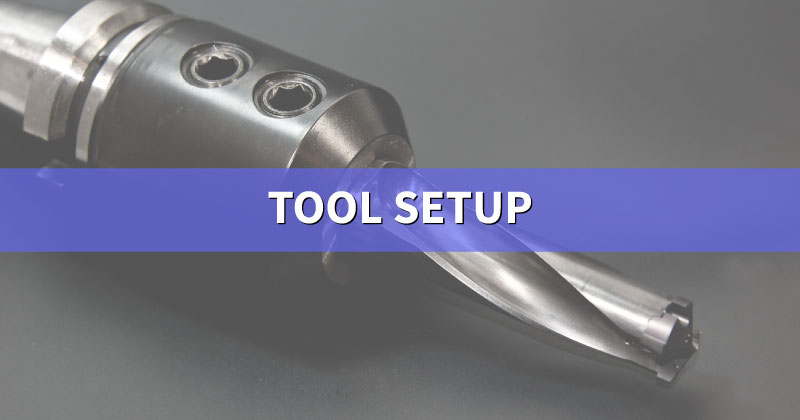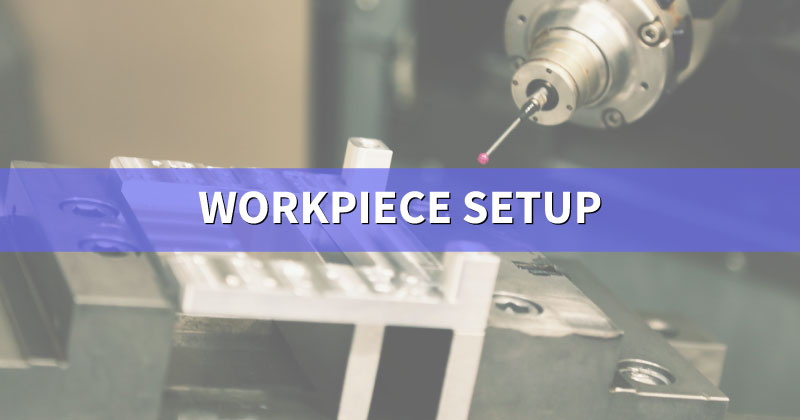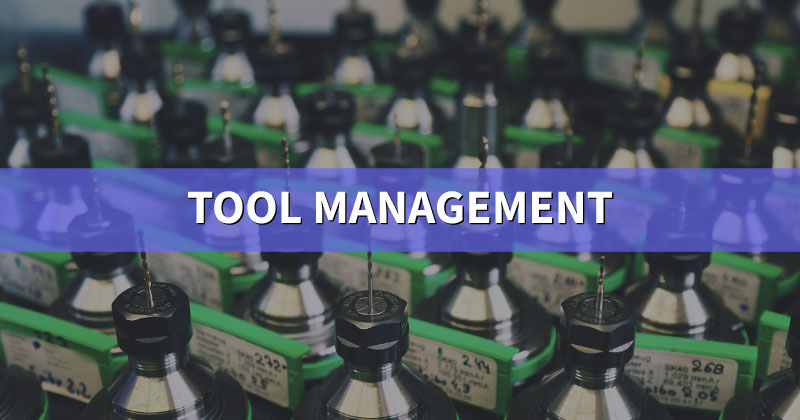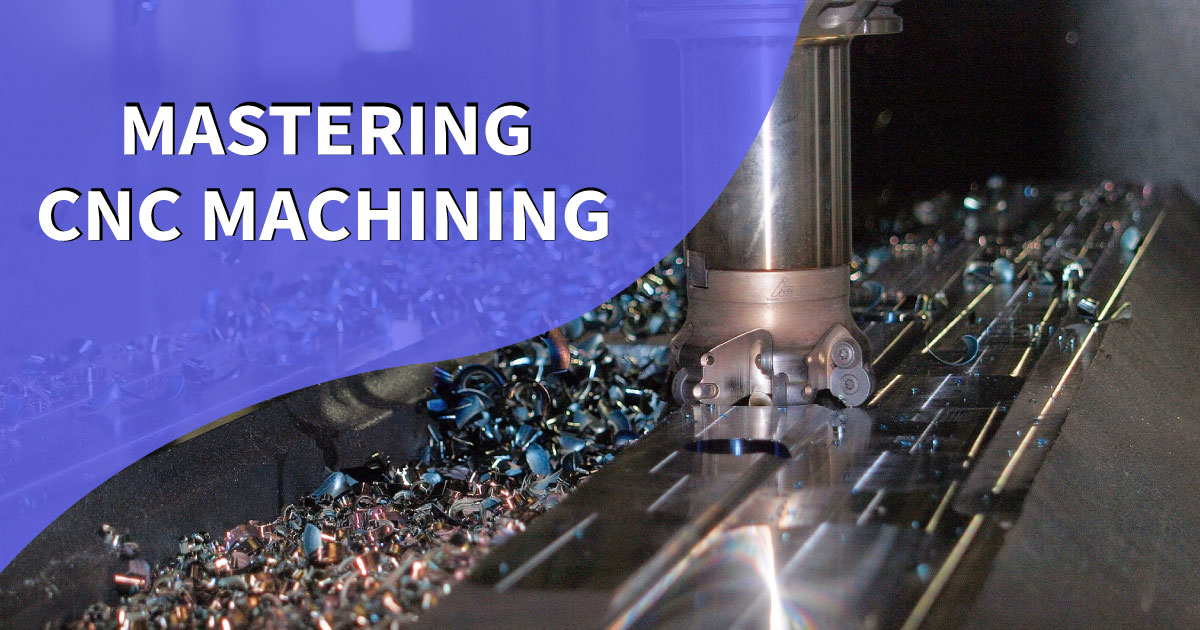Are you looking to take your CNC machining process to the next level? Do you want to improve machining quality, optimize production time, minimize idle time, and maximize tool life? Look no further! In this guide, we will provide you with tips and strategies to help you achieve these goals and improve your manufacturing process. Whether you're a seasoned CNC machinist or just starting out, you're sure to find valuable insights to help you optimize your process and achieve greater efficiency and productivity.
Tool Selection
You should select the most appropriate cutting tool for the material being machined and the specific operation being performed. The selection of cutting parameters such as feed rate, cutting speed, and depth of cut can have a significant impact on both the quality of the finished job and the life of the cutting tool.
Feed, speed, and depth of cut:
Feed rate, cutting speed, and depth of cut are critical parameters in machining operations. The feed rate directly affects the material removal rate, and a higher feed rate can lead to faster machining times. However, it can also generate higher cutting forces and result in reduced tool life. Conversely, a lower feed rate can lead to longer machining times and reduced productivity. Cutting speed affects the rate of heat generated at the cutting edge, with a higher speed resulting in faster material removal rates but also increased cutting forces and tool wear.
A deeper depth of cut can increase material removal rates but also lead to higher cutting forces and more tool wear, while a shallower depth of cut can reduce tool wear but may increase machining time. These parameters should be optimized for the material being machined, the specific operation, and the capabilities of the cutting tool and machine to achieve efficient and high-quality machining.
Different Tools for the Same Operation:
In CNC machining, different tools may produce different results, even for the same operation. Manufacturers should consider the material being cut, the tool geometry, the cutting conditions, and other factors when selecting the tool. It's important to test different tools and compare the results to determine the optimal tool for a particular application.

Indexable Tool vs. Solid Carbide:
Indexable tools are designed for easy tool change and offer flexibility in cutting operations. They are typically more cost-effective for high volume machining. Solid carbide tools are more expensive but offer higher cutting speeds and a longer tool life. They are typically used for high precision and high-speed machining. The selection of indexable vs. solid carbide tools depends on the specific application, cutting conditions, and budget considerations.
The choice of cutting tool depends on the material being machined, the specific operation being performed, and the capabilities of the machine. Using the wrong cutting tool can result in poor surface finish, increased tool wear, and reduced tool life. Conversely, selecting the appropriate cutting tool can result in better quality parts, shorter machining times, and a longer tool life. The tool material, geometry, and coating all play a role in determining the tool's performance, and manufacturers should work closely with tooling suppliers and other experts to select the most appropriate cutting tool for their specific application.
Tool Setup
There are several ways in which proper tool setup can make a difference:
Minimizing Tool Change Time:
One way that tool setup can improve efficiency and reduce production time is by minimizing tool change time. When a tool is correctly set up with the right length, offset, and orientation, it can be easily and quickly changed out without the need for excessive adjustments. This can reduce the amount of downtime required for tool changes and increase the amount of time that the machine is cutting parts.
Reducing tool wear:
Proper tool setup can also help to reduce tool wear, which can extend the life of the tool and reduce the need for frequent tool changes. When a tool is set up correctly, it is less likely to experience excessive wear or damage, which can be caused by improper cutting conditions or alignment. This can save time and money by reducing the need for frequent tool replacements and reducing downtime.

Improving cutting accuracy:
Correct tool setup can also help to improve cutting accuracy, which can reduce the need for secondary operations and improve overall part quality. When the tool is properly set up, it can cut the part to the correct dimensions and tolerances, reducing the need for additional cutting passes or manual adjustments. This can improve efficiency and reduce production time by reducing the need for rework.
Preventing tool breakage:
The correct tool setup can also prevent tool breakage, which can cause damage to the machine, workpiece, or cutting tool itself. By ensuring that the tool is correctly installed with the right length, offset, and orientation, manufacturers can minimize the risk of tool breakage during the machining process. This can save time and money by reducing downtime and repair costs.
Probes for Tool Setup:
Tool probing can be used to accurately measure tool length, diameter, and position in the machine. This guarantees proper tool setup and lowers the possibility of manual measurement errors. Using tool probing can save time and improve accuracy in the tool setup process.
Measuring Tool Life, Wear, and Change Accordingly:
To maintain optimal efficiency and productivity, it's important to measure the tool life and wear regularly and replace the tool as necessary. Different types of tools have different wear characteristics, and the cutting conditions can also affect the rate of wear. Measuring tool life can help identify the ideal replacement interval and avoid premature tool failure.
Workpiece Setup
When the workpiece is properly secured and held in place, it can help reduce vibrations and forces, leading to more efficient machining and a longer tool life. Here are some technical details regarding workpiece setup:
Proper Positioning:
The workpiece needs to be properly positioned in the machine to ensure that it is accurately machined. The positioning is critical to avoid any errors or deviations in the final product. The use of jigs and fixtures can be helpful in achieving precise positioning of the workpiece. Jigs and fixtures can also help reduce cycle time by allowing multiple pieces to be machined at once.
Secure Clamping:
The workpiece needs to be securely clamped to the machine to prevent any movement or vibration during the machining process. Improper clamping can lead to inaccuracies and surface finish issues, and it can also damage the cutting tool. The use of hydraulic, pneumatic, or manual clamping can be employed based on the workpiece material and its size.

Vacuum or magnetic workholding:
The use of vacuum or magnetic workholding can improve efficiency in the setup process. These methods allow for quick and easy workpiece setup and removal. They are particularly useful when machining thin, flat parts or parts with irregular shapes.
Modular Workholding:
Modular workholding is a flexible system that allows for the quick and easy setup of workpieces of varying sizes and shapes. The use of modular workholding can reduce cycle time and increase efficiency by minimizing the time required to change fixtures and clamps between jobs.
Zero Points:
A zero point is a reference point on the machine bed that is used as a repeatable and accurate starting point for workpiece setup. It is a standard reference point that is used across multiple jobs and machines. The use of zero points can help reduce setup time and improve accuracy in CNC machining.
CNC Programming
You can improve machining efficiency and reduce the risk of errors or tool damage by carefully reviewing the CNC program and optimizing the tool paths, speeds, and feeds. Here are some strategies for optimizing CNC programming to reduce cycle time:
Path Optimization:
One of the most effective ways to reduce cycle time in CNC machining is by optimizing the tool path. This can involve using CAM software to simulate and optimize the tool path, or manually adjusting the tool path in the program to reduce the number of tool changes, minimize the distance traveled by the tool, and avoid any unnecessary movements. You can reduce machining time, improve accuracy, and decrease tool wear by optimizing the tool path.
Speed and Feed Optimization:
The cutting speed and feed rate are critical factors that impact the performance of the cutting tool. You can improve machining efficiency and reduce tool wear by selecting the appropriate cutting parameters and optimizing the speed and feed for the specific material being machined. This can involve using empirical formulas or data from cutting tool manufacturers to determine the optimal speed and feed for a given material.
Tool Change Optimization:
Tool changes can be a significant source of downtime in CNC machining, particularly if the tool needs to be manually changed. You can optimize the tool selection and arrange tool changes in a logical sequence to reduce the time it takes to change tools, improving your overall efficiency as a manufacturer.
Program Verification and Simulation:
Before running the program on the CNC machine, it is essential to verify the program to ensure that it is free of errors or warnings. This can involve using simulation software to test the program or manually reviewing the program line by line to identify any potential issues. You can reduce the risk of tool damage or machine crashes, which can lead to costly downtime, by verifying the program.
Simulation can also optimize the machining process by testing different tool paths and cutting parameters to determine the most efficient way to machine the workpiece. After analyzing the simulation data, operators can adjust the program to reduce cycle time, increase tool life, and improve machining quality.
Coolant
Selecting the right coolant and applying it correctly can be a complex process that requires careful consideration of several factors.
Firstly, the material being machined must be taken into account when selecting a coolant. Different materials require different coolants, as certain coolants may be more effective at reducing heat buildup or improving chip evacuation for specific materials. For example, water-based coolants are often used for non-ferrous metals, while oil-based coolants are more suitable for ferrous metals.
Once the appropriate coolant has been selected, it is essential to ensure that it is properly applied to the cutting zone. Utilizing techniques like flood coolant, which applies coolant directly to the cutting zone, or mist coolant, which sprays a fine mist of coolant over the workpiece, can accomplish this. The coolant must be applied in the correct volume and at the right pressure to ensure optimal performance.
In addition to selecting the right coolant and applying it correctly, it is also important to monitor the coolant's concentration and temperature regularly. The coolant concentration must be maintained within the recommended range to ensure optimal performance and prevent bacterial growth, which can lead to machine damage and poor part quality. The coolant temperature should also be monitored, as excessively high temperatures can reduce the coolant's effectiveness and potentially damage the workpiece.
Tool Life Monitoring:
It allows manufacturers to track the wear of the cutting tool and replace it at the right time to avoid any detrimental effects on the quality of the workpiece or the machine.
There are various techniques used to monitor tool life, including visual inspection, acoustic emission monitoring, and power monitoring. Visual inspection involves checking the condition of the cutting tool after a certain period of use, looking for signs of wear or damage. Acoustic emission monitoring uses sensors to pick up the sound that the machining process produces, which changes as the tool ages. Power monitoring involves measuring the power consumption of the machine, which increases as the tool wears.
You can optimize the machining process by monitoring the tool life to achieve maximum tool life while maintaining high-quality parts. You can adjust the cutting parameters, such as the cutting speed, feed rate, and depth of cut, to ensure that they are within the recommended range for the tool and material being machined. You can also choose the right tool coatings and geometries that are suitable for the specific application.
Process standardization:
Process standardization can significantly impact the quality and efficiency of the manufacturing process. Standardization involves developing and documenting detailed procedures for each machining operation, including tool selection, tool setup, workpiece setup, machining parameters, and inspection methods. The procedures should be developed based on the best practices and standards established by the industry, and they should be reviewed and updated regularly to reflect any changes or improvements in the process.
Standardizing the process ensures that all operators follow the same procedures and use the same techniques, reducing variation and improving consistency. This consistency reduces the risk of errors and defects, resulting in a higher-quality product. Also, standardization enables easier training for new operators, as they can learn the standardized process and procedures.
Standardization can also optimize production time by identifying and eliminating inefficiencies in the process. To reduce production time and increase throughput, you can analyze the machining process and identify areas where time can be saved or steps can be eliminated. This can lead to a more efficient process and ultimately result in cost savings and improved productivity. This can result in significant cost savings and increased profitability for the manufacturer.
Tooling Inventory Management:
An accurate inventory of cutting tools must be maintained to ensure that the appropriate tool is available when needed. This reduces tool changeover time and increases productivity. To achieve this, a comprehensive tool management system should be put in place to track tool usage, maintenance, and reordering.

The tool management system should include details such as tool type, diameter, length, manufacturer, and tool life. This information can be stored in a database or spreadsheet and used to track tool usage and calculate the expected tool life. This data can also be used to determine the optimal time for tool replacement, which can help reduce machine downtime and increase productivity.
In addition, proper storage and handling of cutting tools can also extend their lifespan. Cutting tools should be stored in a clean, dry environment to prevent corrosion and damage. They should also be handled with care to avoid chipping or other damage.
Continuous improvement
This involves monitoring and analyzing the machining process to identify potential areas for improvement, such as reducing scrap or rework, optimizing tooling or programming, and increasing machine uptime.
You can continuously optimize the CNC machining process by implementing changes based on data-driven insights. This will not only improve performance but also reduce the costs associated with machining. This can involve implementing lean manufacturing principles, such as reducing setup time, eliminating non-value-added steps, or streamlining the workflow.
Continuous improvement can also involve ongoing training and development of personnel to ensure that they are knowledgeable and skilled in the latest machining techniques and technologies. You can empower your personnel to contribute to the continuous improvement process, which can help your organization achieve greater engagement and ownership of the machining process. This approach can lead to higher quality output and increased efficiency, as your employees are invested in the success of the process.
Start implementing these tips today to take your machining skills to the next level!




